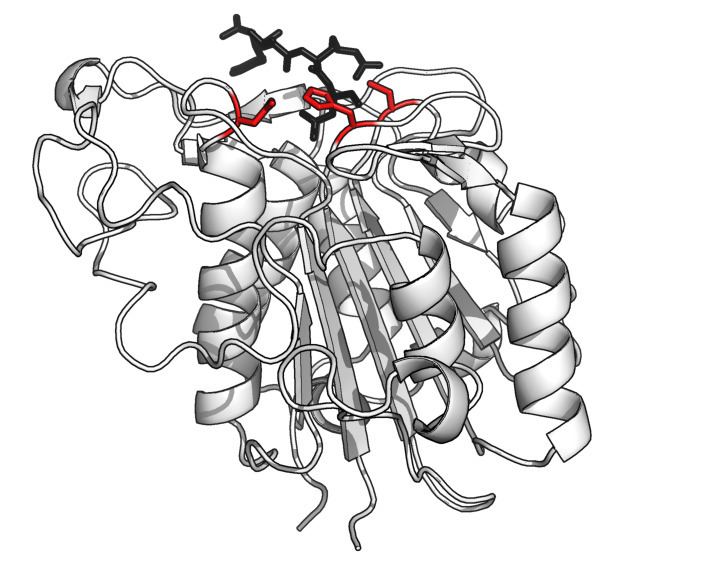EC number 3.4.22.34 IntEnz IntEnz view ExPASy NiceZyme view | CAS number 149371-18-6 BRENDA BRENDA entry KEGG KEGG entry | |
 | ||
Legumain (EC 3.4.22.34, asparaginyl endopeptidase, citvac, proteinase B, hemoglobinase, PRSC1 gene product or LGMN (Homo sapiens), vicilin peptidohydrolase, bean endopeptidase) is an enzyme that in humans is encoded by the LGMN gene (previous symbol PRSC1).
Contents
Distribution
This enzyme was originally identified in the vacuoles of legume seeds, and was subsequently identified the lysosomes of mammals and Schistosoma mansoni. They are now known to be present in a range of plants and animals.
Reaction and specificity
This enzyme catalyses the following chemical reaction:
Hydrolysis of proteins and small molecule substrates at -Asn-Xaa- bondsBoth plant and animal legumains are most active in acidic environments.
Prodomain processing
Legmains are produced as inactive precursor zymogens. their C-terminal domain binds over their active site (where a substrate would normally bind), inhibiting activity. Once in the acidic environment of the vacuole or lysosome, the prodomain is cleaved off to reveal the active enzyme.
Mechanism
Legumain is a cysteine protease from the C13 family of the CD clan of proteases (MEROPS). It uses a catalytic triad of Cysteine-Histidine-Asparagine in its active site to perform covalent proteolysis of its substrate.
